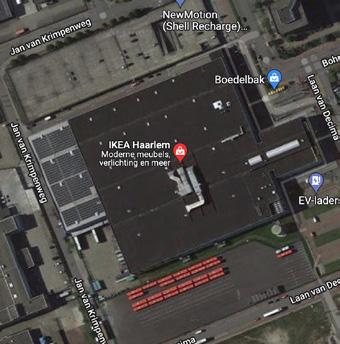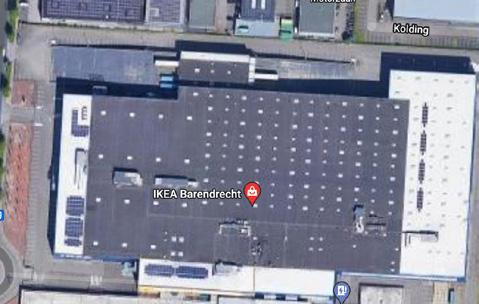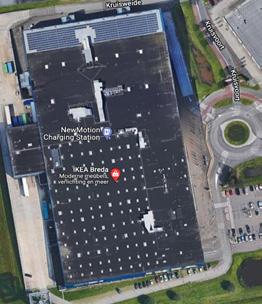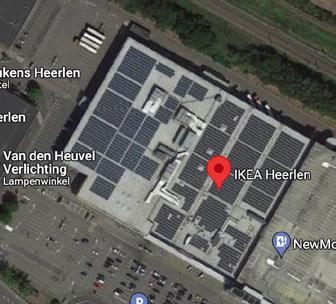










entrepreneurship in architecture and the built environment ar 0131 21/22 ir . a . c . bergsma ir . s . h . verkuijlen

executive summary introduction
primary market research the product the solution the moss solution the product service value proposition canvas businessmodel canvas competition competitive advantages why me/ why now?
stakeholder map / dmu market size market size of market segments
beachhead market go to market strategy financial plan
production process marketing (expansion) strategy market expansion stragegy roadmap refrences figurelist apendix summary interviews moss research market size excel total market dize exel housing market size excel industry ikea branches analysiss
UHI-island we experience in our cities is negatively affecting our physical and mental health resulting eventually in negative economic effects. The green building solutions on the market are not suitable or not compatible to every user and building.

The industry segment is the target beachhead market, with a SOM of 1.04 km2 potential for mossie panels for roofs and facades, this will generate a revenue of €73 million
The founder is a master architecture student with a lot of experience and knowledge with the UHI effects, green building solution this gives a good insight in the problems and solutions, The team is made up out of a diverse ambitious and passionate students. We can offer architecturally designed plans for the implementation of the panels.
2 4 6
First we start within our beachhead market, the industry, we attain large projects with key partners so we can expand our production process and market our product to other home/ business owerns/ renters. From there through strategic marketing win larger projects and build our reputation, lower our pricing and expand our market share also in the housing market and others. 1 3 5 7
Our primary revenue stream is from the panel sales, when expanding the product design options as well there could come a second revenue stream. The production process of the panels takes 3-4 months, so everyday we grow new moss to ensure a consistent stream of revenue.
Mossie has developed a “click and go” modular moss panel that decreases the negative effects of the urban heat island and is compatible to every building structure and user situation. It offer less maintenance and maintenance service with the panel. The panel has the esthetic bonus of all year round green. We offer large projects designed plans by architects and installation of the panels by experts.
There are numerous companies that offer green building solutions. Companies like: repsyre, sempergreen and mobilane. (there are even more on the market), Unlike all these green solutions Mossie is compatible to all buildings and users without having to adapt building structures.
Climate change is the most significant threat to life on Earth. It results from natural and anthropogenic emissions of air pollutants, especially greenhouse gasses (GHGs), causing largescale effects on the climate(Climate Change 2022: Mitigation of Climate Change, n.d.)
Global temperature rise, drought, declining water resources, shrinking ice sheets, flooding and erosion in coastal areas, ocean acidification, rising sea levels, and increasing extreme weather events present irrefutable evidence of global warming.
Global warming makes cities warmer, while urbanization intensifies this process via urban heat island generation and aerosol radiative forcing. The consequences of interactions among climate change, the urban heat island effect, and air pollution are expected to increase the risk of poor human health in cities globally by the middle of the twenty-first century.
Significant health and monetary co-advantages couldbe related to decreased fossil fuel exploitation (Patz et al., 2014). Therefore, climate change mitigation and adaptation measures constitute a significant challenge for quite a long time to come. Urbanization under climate change, without efforts to increase resilience, is exposing cities around the globe to enormous risks
• Southern and central Europe are seeing more frequent heat waves, forest fires and droughts.
• The Mediterranean area is becoming drier, making it even more vulnerable to drought and wildfires.
• Northern Europe is getting significantly wetter, and winter floods could become common.

• Urban areas, where 4 out of 5 Europeans now live, are exposed to heat waves, flooding or rising sea levels, but are often ill-equipped for adapting to climate change. (McCarthy, 2021)
Climate change is already having an impact on health: There has been an increase in the number of heat-related deaths in some regions and a decrease in cold-related deaths in others.
We are already seeing changes in the distribution of some water-borne illnesses and disease vectors. (Physical, Psychological, and Social Health Impact of Temperature Rise Due to Urban Heat Island Phenomenon and Its Associated Factors, n.d.)
Damage to property and infrastructure and to human health imposes heavy costs on society and the economy (Climate Change Consequences, n.d.).
The challenges for the Dutch cities:
1-2 degrees increase in temperature in the Netherlands
• Loss of biodiversity
• warmer summers
• Air pollution
• More extreme rainfall
• Physical/mental health related problems and death due to Heat
(Dit zijn de gevolgen van klimaatverandering voor Nederland, n.d.)
We need a solution that will make us resilient right now!




 Air pollution
UHI-effect
Flooding
Loss of Biodiversity
Air pollution
UHI-effect
Flooding
Loss of Biodiversity
a way to do this is to make your own environment resilient against climate change by using vegetation as a solution (rushayati et al., 2018).
we can make our environment resilient against climate change with the use of vegetation.
• it has a cooling effect
• increases biodiversity
• improves the air quality
• retains rainwater
• improves physical and mental health
uh -effet city and municipality strategies are made for 2030-40 and 50. these strategies and policies involve making the cities resilient against uhi-effect also by adding a lot of green to the cities and neighborhoods. also water storage functions will be improved by breaking open the streets. however these actions take time, years even and a lot of money. but in the meantime the uhi-effect does not wait.








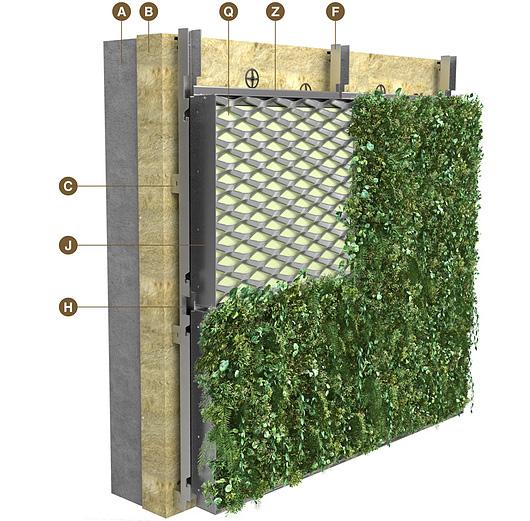

there are green building systems that have a solution to these problems:
green roofs and facades.
however these green building solutions have some disadvantages:
• can be expensive in investment but also in maintenance costs, they can be high in maintenance and installation cos
the uhi-effects stated in the previous page also include health and wellbeing that influence the economics in a lot of cities and neighborhoods adding trees is difficult due to all the cables and pipes in the ground and little space, not even to think about large open parks and water. what does every citizen do to make themselves and their homes resilient?
a green roof is not for everyone, not every roof or facade structure is suited for the green systems due to weight or the slope of the roof besides that a lot of people do not have the money or time for the maintenance of these systems
• the climate adaptation policies of the government and municipalities take years to be realized and in the meantime we still face the negative uhi-effects.
• the cities climate adaptation plans take time also due to the lack of space available in the dense cities and needed investments
• in addition, the direct environment of buildings and its users can not always be directly improved due to their proximity to the vegetation.
• there are multiple options for solutions to decide from and are not easy to use and often require specialists to install and need hands on maintenance
• and not suitable for every building or customer due the size and weight, available space or building ownership. (flats, tiled roofs, industrial buildings) they serve a single function and one life purpose to be used for

intesive & expensive maintenance/ installation


compatibility structure, installation, weight

modularity one solution, installed circularity
short summary of the interviews in the appendix
we think that there should be a new innovative green solution using vegetation to make the city and the people resilient against the uhi-effects to find if there is a need for this solution we did some primary market research
the first hypotheses we had was
“to mitigate uhi-effects in the city there needs to be a vegetation solution put in by the municipality on the street to cool and clean the air, because a lot of building are not compatible to green roofs or facades (structural load for instance we can not reach into every home ”
the first two interviews we did to test this hypothesis were with: the municipality of the hague, Department housing the municipality of haarlem, councilor economy, tourism; spatial urban development, energy transition, development visions & animal welfare.
conclusion:
during this interview it became clear that policies take years and investments and that once people return to their homes the effects of the uhi-effect are still affecting them in and around their homes not in the busy street but also in the more suburban areas. we are in a klimate transition until 2040-2050. people also have to start doing things themselves, because it is difficult from politics to do something in a private house. and not all green solutions can just be implemented because a lot of buildings are not suitable for these building systems
so we changed our way of thinking what if there is a green solution that is compatible to every type of building?
we thought instead of designing a public solution for the streets to design a solution compatible for every home. this changed our hypotheses to mitigate uhi-effects with vegetation in the cities and to make citizens resilient they need a compatible green solution for every home
then we started thinking further because there are a lot of buildings with different function from housing. there are also a lot of businesses within a city and industrial buildings. so we wanted to incorporate and test these as well.
this led to the second hypothesis :
“to mitigate uhi-effect with vegetation every building should be resilient, therefore we need a green solution that is compatible with every building that can’t have a green roof or facade solution.”
we tested this hypothesis by interviewing: business owners that rent his warehouses and office homeowner that lives in an apartment building
conclusion: from the interviews we had we found that homeowners are looking for a green solution but what is stopping them is :
• maintenance
• space
• costs
what is stopping renters is: maintenance, space, costs and the future move when they can not easily take a green solution with them. what is the problem/need of a business owner:
• warehouse structures are not equipped to take the load
• they rent the buildings so do not want to invest for the owner
from this research it became clear that our second hypothesis was right



Questions municipality the hague/haarlem what is your current policy of mitigating the uhi-effect? are there policies in place about the use and increase of vegetation in the city?
if there are policies:
how are you implementing these policies? what problems do you run into?
how do you solve it now?
do you have policies for home/business owners and renters?
“To miTigaTe UHi-effecT wiTH vegeTaTion every bUilding sHoUld be resilienT, THere fore we need a green solUT TwwHaT is compaTible wiTH every bUilding THaT can’T Have a green roof or facade solUTion.”
Questions home/business owners itw / apartment owner have you ever had greenery in and around your home/building?
if yes/ how did you experience that? did you encounter any problems while using it?
if not/ what is the reason you never had it before? have you encountered any problems with this? what’s stopping you?
have you ever made use of a green roof or green facade?
if yes/ how did you experience that? did you encounter any problems while using it?
if not/ what is the reason you never made use of it before? have you encountered any problems with this? what’s stopping you?
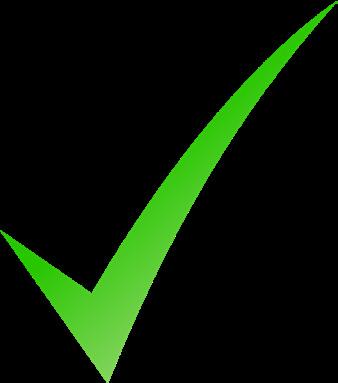
a “click and go” highly modular and affordable moss panel that is a green solution for each type of building and structure apartments, warehouses, flat roofs, sloped roofs, sheds, fences, facades.
the lightweight of the panel is made possible due to the use of moss. the lightweight design makes it possible for the panel to be mounted to any type of structure, and the “click and go ‘’ frame design makes it possible to easily use and reuse the panel around your home /business for a different function from a roof to a facade, or from a balcony to a fence, anything is possible with the click and go system. the “click and go” frame will be 3d printed out of recycled and recyclable materials so the panel can be fully recycled (cradle to cradle).
modular
the panels have a modular system which means the fixing system is the same and an easy click system. it can be easily clicked in and out and due to the simple system it can be easily reused in a different location.
lightweight
the weight of the moss = compared to green walls and roofs this makes a big difference this makes it usable in a lot of places where it was not before, like facades, balconies, roofs, etc.
esthetics
moss is very resilient and does not lose color quickly by a simple irrigation system; in draughts a little bit of water can be given so the moss does not lose its color
modular

light

affordable
€50,- per panel


circular




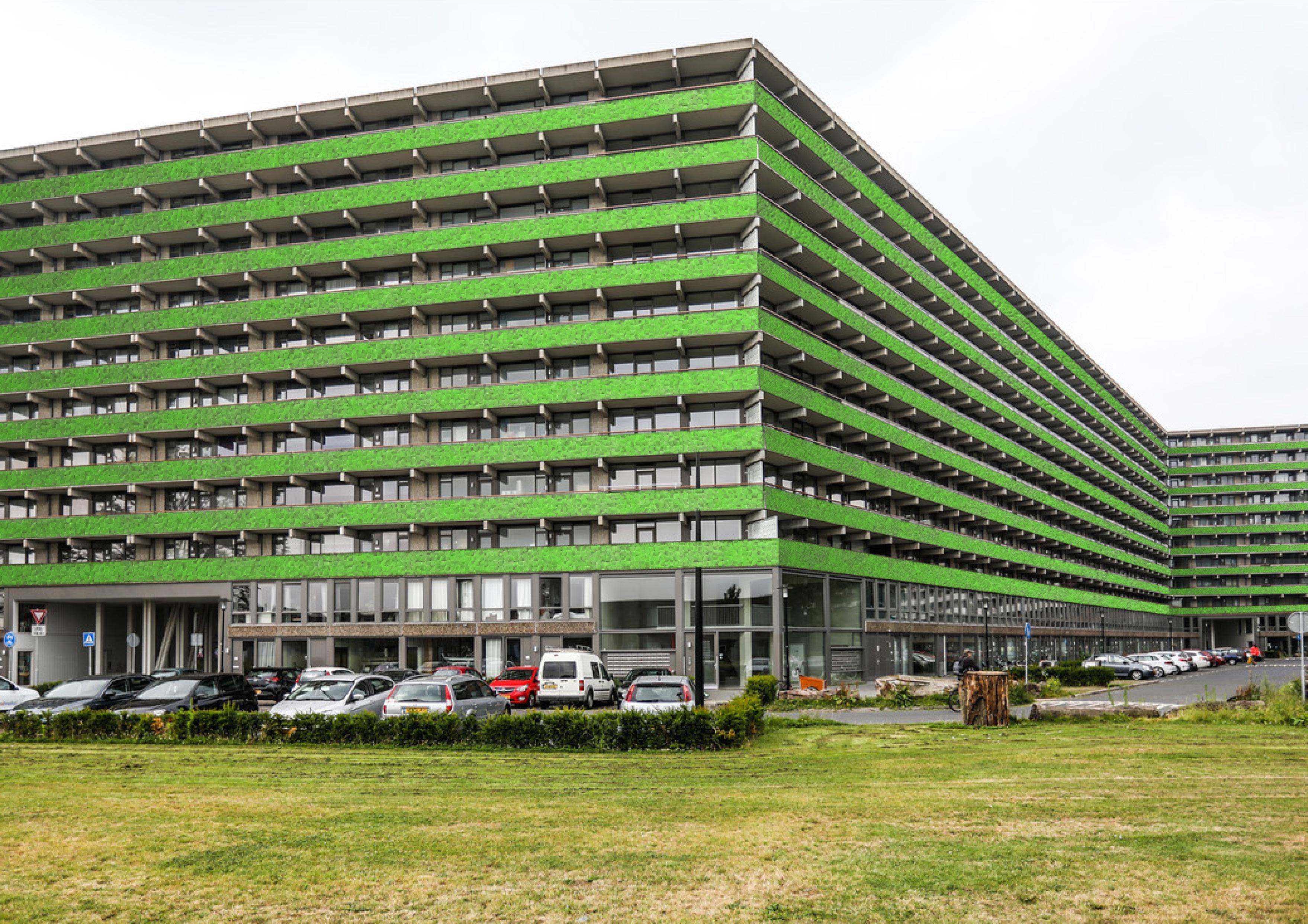
moss is a powerful plant species with underrated powers. some even see moss as weeds! we worship moss and the ecosystem services with which it can enrich us, only us know little about moss only limited scientific research has been done into the effect of moss and so there is still much to be learned apparently moss does thus perform better than a water body in terms of the mitigation potential of uhi. this could be due to the greater transpiration surface of the moss compared to the evaporation surface of water (stache et al., 2022).
a water body with an area of 16 m2 can cool 2 826 m3 of surrounding space by 1°c (qiu et al., 2013).
maintenance
the moss is very low maintenance, so there is almost no water needed to keep the moss in good condition.
water retention
moss holds water as well as soil and other plants, due to the lightweight characteristics the weight when wet will allow for the panel to be placed in a lot of places but it also holds some water which can take some pressure of the water systems during heavy rainfall
natural particle filter
compared to other plants, moss takes up the most particles and cleans the air as best
cooling
moss can take in a lot of water due to its leaf index it can evaporate as much water as a square meter of water this means that during summer the air surrounding the panel is cooled.
insulation
moss can take in a lot of water due to its leaf index it can evaporate as much water as a square meter of water this means that during summer the air surrounding the panel is cooled
acoustics
moss can absorb sound so it can provide damping in noisy areas.
circular:
natural product that after use can be given back to nature



cooling / insulation
direct sunlight & evaporation
air purifier
co 2 to o 2 & absorbes / removes voc ’ s , pm 10, nh 3

water retention
5 liters / panel

sound absorbtion
in the dense leaves

circular
Ecosystem benefits Figures
NH3 uptake 211-422 grams nitrogen/m./year
NO3uptake 21-42 grams nitrogen/m./ year
Phytoremediation (capture and processing of particulate matter)
PM10 1.2-8.2 gram/m. of which 0.5-1.8 gram/m. PM2.5
Dry weight moss 1.2 kg/m2
Water collection capacity 5 L/m.
CO2 absorption 0.6 kg/m./year
Moss production 120g/m./year
Air filter capacity (indication)
Improvement of mental health (
1 million m. of air per m. per year
30% with daily exposure to nature
Insulation Still to be quantified
figure 6: capacities moss(gorespyre.com, n.d.) more research is in the appendix

How users can buy and use the MOSSIE panels; Mossie panels can be found online and in stores. Customers have 3 options:
• buy mossie panels a piece online: this comes with a “click and go” manual
• buy mossie panels a piece in the store: this comes with a “click and go” manual
• Go the Mossie wegsite and start a projects with us.
When you buy mossie panels a piece with a “click and go” manual or start a projects you have quaranteed maintenance service with the panel.
When you want to buy moer panels for your total roof, facade, warehouses, etc you can start a projects with mossie, we provide architectural designs for the intergration of the mossie panels and installation expert to install the panels.
When the panels does not fit your needs anymore, or you have to many and need to put a few away, mossie will pick up your used panels so we can reuse reburbish or recycle them. This makes it a circular product because mossie remains in the end responsible for the product.


stores
1-5 panels

webshop


option 1
buy single panels
garden-balcony-interior
DO IT YOURSELF
”CLICK AND GO” MANUAL
MAINTENANCE SERVICE
PICK-UP AFTER USE SERVICE
CUSTOMER SERVICE
option 2
start a project
roof-facade-other
PROJECT MANAGMENT:
-professinal designed laying plan of the panels on facade/roof
-professional installation
MAINTENANCE SERVICE
PICK-UP AFTER USE SERVICE
CUSTOMER SERVICE
after concluding the research we concluded that our product could service multiple users. for each user the value can be different. for instance, for home owners the value we bring is less maintenance, low investment cost compared to the long lifespan and multiple use options of the panel. we also offer a solution for their homes that normally would not qualify for other green roof or facade systems. for business owners we offer an affordable low maintenance solution for their buildings that the
structures can take. it also brings business owners closer to reaching their obligation stated by new government policies for the industries (je bedrijf verduurzamen?
zo kan het, n.d.). for both home renters and business owners that rent their building the “click an go” system offers them the options to take the panels with them to their next location and offers a solution that is non invasive for the building owner.
• cools the surrounding atmosphere
• helps against air pollution
• water retention
• visible green with a positive mental/physical health effect
• recycled and biodigraded products used
• products that are modular and can be used for different purposes
• maintenance
• optional insurance
• part of investment returned when given back
• low budget product to bring sustainable solutions and uhi resilience for the masses
• lightweight modular panels can be used on any surface
• Low plant maintenance
• low maintenance costs
• We provide installation
• lightweight modular panels that can be put on any surface/structure
• low investment cost
• easy to dismount and mount yourself
• lower energy costs
more importantly, the mossie panels offer resilience: cooling in the summer , improves the air quality, retains water, year round green, acoustic insulation, insulation and improves the physical and mental health
the mossie panels can also be used by schools, universities, public buildings, etc. the panel offers value to multiple users.
• cooling in the summer
• isolation in the winter
• low maintenance of green
• mental and physical health benefits
• low investment costs
• panels can be demounted and reused for different purpose/location
• acoustic damping
• customer pains
• expensive renovations to make green roofs
• high maintenance
• high maintenance costs
• not wanting to invest when the building/home is rented
• maintain the plants
• installation
• renovate the roofs/walls to fix the green
• find the right green solution to fit your house
• home/building not eligible for invasive green solu-
• Housing coorporations
• Municipalities
• Investors
• Respyre
• Big retail industries like Ikea
• 3D printing proffesionals
• roof & facade installation experts
• Establish a diverse team
• Research and Development of the panels
• Find investors
• Cools the surrounding air
• Acoustic damping
• Isolating
• Low investment cost
• Low maintenance (cost)
• Litte irrigation neccesary
• Esthetical quality and gaurantee
• Click and go possible to use for a different purpose
• Greenhouse
• Testing facilities
• Test locations
• Variable costs - Greenhouse, assembly factory, transport, temporary staff, maintenace, insurance,
• fixed cost - Moss growing cost, assebly cost materials, salaries, IT.
• sunk cost - R&D S&M
• customers can easlity buy the panels online or in partner stores
• We provide maintenance and service
• When needed we can offer advise on the layout/design on roofs, walls, fences, etc.
• Personal design options
• possible to move to different locations
• compatible for any structe ( roof, facade, balcony, fence, doors, etc)
• Service and maintenance
• Online orders ?
• deposit when returned to Mossie
• Mossie website
• online marketing
• architects
• housing coorporations
• Social media
• word of mouth
• stores
• pilot projects
• Home owners that cant place greenroofs due to:
- roof structure
- high costs
- Maintenance (cost)
• Apartment owners with only a small balcony that does not have room for big plants and want cooling, mental and health effects of the panels
• Renters that want to take their invesment with them to the next home.
• Business owners of big warehouses that need cooling in the summer and due to structure and cost cant implement other solutions
• Business owners that rent big warehouses that need cooling in the summer and due to structure and cost dont want to implement other expensive, heavy, high maintenance solutions.
• Municipalties that want to lower sound and air pollution alongside highways.
• primary revenue stream is selling the panels
there are many companies in the netherlands and worldwide that provide green solutions for homeowners, municipalities, industrial warehouses, education facilities, etc. however, there are few that use moss as their vegetation or in a panel. i will first focus on the dutch market so i analyzed a few competitor companies that provide a variety of green building solutions like green roofs and facades
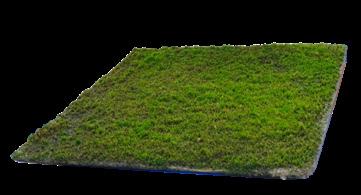


respyre have developed a concrete and a concrete plaster that catches the growth of moss on the surface with the bioreceptive concrete, respyre turns every unused surface into an opportunity to bring vegetation into the urban environment.
any surface covered with moss, small or large, becomes an autonomous and natural respiratory system for the city a system committed to the natural resource cycle and environmental sustainability with this, respyre allows cities to breathe
their advantage: new sustainable technology, lightweight, low maintenance(cost), our advantage: our solutions are demountable, reusable, less invasive and possible to use in a lot of different ways mobilane


mobilane is building a greener and healthier living environment worldwide mobilane is the market leader in the sustainable development and supply of patented innovative green systems mobilane's green systems offer a turnkey solution for almost any situation think of ready-made hedges, green roofs, green walls and facades.
their advantage: they use plants which has a different feeling image than mos for most people our advatage: it is a large and heavy structure, we provide lightweigt modular panels that can create the same big structures they supply ostly to bigger businesses, and we also for home owners


sempergreen - a grower in heart and soul - is an organization that wants to improve the quality of life through innovations in the field of sustainable construction and greenery in the city. we supply quality products for green roofs, green facades and ready-to-use ground covering worldwide. our ambition as a market leader is to make the world a bit greener together with our customers
their advantage: large company with a lot of green solutions and the biggest market player in the netherlands, they use plants which has a different feeling image than mos for most people
our advantage: lightweight, low cost (low maintenance cost) one fits all solution for any type of outdoor use.
sempergreen is an overalld affordable green solution, however to install this solution you need to purchase other product such as te ground layer, pebbles, fertilizer or you have to change your roof structure (when you have a tilled roof for instance) this is what makes this solution quite expensive

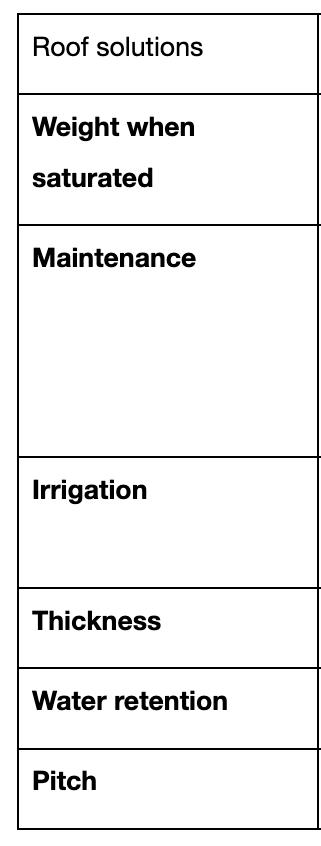




Mobilane
our advantage:
It is a large and heavy structure, we provide lightweight modular panels that are suited to any type of building and projects without needing an extra structure.
Sempergreen
Our advantage:
Lightweight, low cost (low maintenance cost) one fits all solution for any type of outdoor use. Sempergreen is an overall affordable green solution, however to install this solution you need to purchase other products such as the ground layer, pebbles, fertilizer or you have to change your roof structure (when you have a tiled roof for instance) this is what makes this solution quite expensive.
Respyre
Our advantage:
Our solutions are demountable, reusable, less invasive and possible to use in a lot of different ways and not only on the facade like respyre.














i am an architecture master student and through my studies and work expierience i have a understanding of our built environment and the challenges it faces on top of that i also have the knowledge of sustainable and green solutions that can be used in our built environment. because of this knowledge i also know that there are a lot of buildings and people that can not make use of the current solution on the market. an important aspect of designing a green building solution is that i also have an affiliation with the design and esthetic aspect of the solution which for a lot of people is important in our built environment
besides from my knowledge of the problems and solutions i am experienced in working in diverse teams and stakeholders.

diverse studies
this is valuable for mossie when working together with other key partners and clients.
besides my experience and knowledge i also have a mission to make our built environment and especially the citizens resilient against the negative effects of climate change. i am ambitious and passionate about this start-up and this will give me the perseverance to continue in tough times.
for now there is not yet a team assembled, however in the coming months i want to bring together a team of passionate and ambitious university students to further develop this start-up idea and find a co-founder. this team will be diverse so that we can inspire and challenge each other and have different visions and ideas, this will accelerate the development process.
significant health and monetary co-advantages could be related to decreased fossil fuel exploitation (patz et al., 2014). therefore, climate change mitigation and adaptation measures constitute a significant challenge for quite a long time to come urbanization under climate change, without efforts to increase resilience, is exposing cities around the globe to enormous risks to biodiversity, air quality, flooding, mental and physical health and the economy
the current market of green solutions offer a lot of different products ranging from different types of green roofs to green facades, to garden solutions there are even a few moss solutions in the form of moss mats and bio-receptive concrete by the start-up respyre there is a visible market trend around green roofs and facades, the awareness of the climate and sustainable solutions is spreading and a lot of municipalities are giving subsidies to implement green solutions in homes and businesses (green roof market – global industry trends and forecast to 2028 | data bridge market research, n d.).
so there is an wave of sustainability and awareness due to the negative effects that we are seeing and experiencing more often and policies that obligated companies and governments to reach a sustainability potential. there are a lot of people, governments and companies that want to invest.

mossie has different stakeholders in the game. mossie itself is the management, marketing and research & development side of the business for most mossie has partnerships with professional planters, 3d printing companies and with the installation companies. mossie sells the product to home/business owners and renters. it also provides for housing corporations and municipalities, but this often goes via architects or
contractors that use our product in the designs. architects and contractors can also encourage home/business owners to buy mossie panels this also brings us to the decision making unit (dmu). where often the home/business owners are the initiator, user, gatekeeper, decider and buyer. however in case the customers are renters or live in apartments, the influencer can be different as well as the deciders, gatekeepers and initiators. this can be dif-














initiators
renters, home/business owners, employees, students (building users), municialities, architects, contractors
users renters, home/ business owners, employees, students (building users)

buyers
renters, home/business owners, cfo, municipalities, housing corporations




influencers

housing corporations, home/business owners, stores, adverstisements, architects, constractors
deciders
renters, home owners, ceo, municipalities/ business gatekeepers renters, housing corporations, home/business owners, municipalities, architects, contractors
95.142 251507232,6
13.526
554411904,1 total km lof green solutions 123,2464226 km2 m2 warehouse 800 m2
131.647 348007952,9
the complete excel of the market size calculation can be found in the appendix as well as the assumptions made, these are the final numbers.
Assumption Mossy market share green roofs 0,05 panels produced in a month 3904 panels
Assumption Mossy market share facades 0,05
9.742 Total km2 greenroof with Mossy panels 5,7 km2
total amount that can be produced 93696 panels
127.898 338097496,8 Total km2 Facades f with Mossy panels 9 km2 Revenue of 2 years €4.684.800
441.857 total km2 14,7 km2
53.616
1.069.100 1 Mossy panel size 1 m2
9.118.946 buildings
1658112622
0,2
Mossy panels on roofs 5726050,607 panels
Mossy panels on facades 9000000 panels
2181352612 1 mossy panel €50
Mossy panels roofs revenue €286.302.530
Mossy panels facade revenue €450.000.000
Total market size €736.302.530
775000000 time to make panels roof 9,778091884 years
0,001 Revenue a year €29.280.000
€50 panels a year sold 585600
775000
€38.750.000
the current market of green solutions offer a lot of different products ranging from different types of green roofs to green facades, to garden solutions. there are even a few moss solutions in the form of moss mats and bio-receptive concrete by the start-up respyre. there is a visible market trend around green roofs and facades, the awareness of the climate and sustainable solutions is spreading and a lot of municipalities are giving subsidies to implement green solutions in homes and businesses (green roof market – global industry trends and forecast to 2028 | data bridge market research, n.d.).
the square meters on the ground are aslo the square meters of roof. that the roof/facade ratio is 0,2 (due to row houses, windows, already used facade) each green solution has its own market and some companies provide both green roof and facade solutions. green roofs: intensive, extensive and semi-intensive. green facades: direct & indirect green facades, continuous living wall and modular living wall (palermo & turco, 2020).
tam
mossie, on the other hand, provides a solution that fits all the building structures and touches each category, however mossie is a new category of green solutions on its own.
because mossie touches on multiple green solutions, we decided to look at both the green roof and facade market to make an assumption of the serviceable obtainable market of mossie.
https://www.statista.com/statistics/241828/number-of-visits-to-ikea-stores-worldwide/#:~:text=IKEA%3A%20number%20of%20store%20visits%20globally%202010%2D2021&text=In%20the%20fiscal%20year%20of,one%20billion%20visits%20of%202019.
total amount of buildings in the netherlands 9.219.518
total km2 of built terrain in the netherlands 3615,26 km2 (cbs nl)
62.829
523,3 km2 housing 95.142
166 km3 public 131.647
km4 industry 127.898
km5 office 348 km6 logies 338 km7 stores
to assume the total available market size we looked at the total available m2 of roofs and facades in the netherlands that can be used for green solutions. then determine what the serviceable available market would be for all green solutions and from there we assumed our serviceable obtainable market for mossies.
because the total market is so large we wanted to look at different segments: housing and industry because they have the largest amount of km2.
Niet-woning
Niet-woning
Niet-woning
we assumed that:
total km2 of built terrain in the netherlands 3615,26 km2 build terrain houses 523,25 km2
total km2 of not-housing 1658,11 km2 (public, industry, office, logies, stores)
total m2 roof all buidlings (not housing+housing) 2181,35 km2
total m2 facade potential 436,27 km2
current percentage green roofs 5%
current percentage pv-panels 12%
total km2 potentially for green roofs 1431,51 km2
total km2 potential for green facades 436,27 km2
assumption market share of all green roof solutions 8%
assumption market share of all green facade solutions 2%
sam
total km2 of green roof market 114,52 km2
total km2 of green facade solution market 8,72 km2
total km lof green solutions 123,24 km2
https://solarmagazine.nl/nieuws-zonne-energie/i22290/readar-7-procent-van-groene-daken-heeft-ook-zonnepanelen
som
assumption mossy market share green roofs 5%
https://www.change.inc/energie/1-5-miljoenste-zonnepaneel-gelegd-37036 Mossy panels on roofs 10990214,15
assumption mossy market share facades 5%
total m2 green roofs 10906763,06 m2 Mossy panels on facades 3349398,60
m2 of roofs aleady in use
total km2 greenroof with mossy panels 5,7 km2
m2 3 month starting process
total km2 facades f with mossy panels 9,0 km2
Niet-woning met overig gebruik 441.857 after 3 months every month revenye
total km2 14,7 km2
Niet-woning met meerdere functies 53.616 total m2 of empty roof left 1908683536 m2 panels possible to produce each month
Niet-woning totaal 1.169.672
1 mossy panel size 1 m2
mossy panels on roofs 5726050,607 panels
https://www.cbs.nl/nl-nl/cijfers/detail/81955NED?dl=64EDC total km2 potential usable roofs for Mossy 1908,683536 km2 total panel capacity 4,88 x total m2 warehouse
mossy panels on facades 9000000 panels
Total m2 of Built terrain in the Netherlands 3615,26 km2
https://www.cbs.nl/nl-nl/cijfers/detail/70262ned?dl=3D8B#TotaalBebouwdTerrein_6 to make 5726050,607
Average m2 per house 65 m2
1 mossy panel €50
increase PV-panels 0,2 within next 2 years
https://www.cbs.nl/nl-nl/achtergrond/2018/22/woonoppervlakte-in-nederland totaal aantal daken met pv-panelen 381,7367071 m2 warehouse
mossy panels roofs revenue €286.302.530
mossy panels facade revenue €450.000.000
Total number of houses 8.049.846 panels produced in a month build terrain houses = total * 65m2 523239990 m2
km2
Not housing terain = total built terrain-housing terrain 3092,02001 km2
Not housing total amount 1.169.672
increase green roofs 0,05 within next 2 years
next 2 years
Total roof market 5726050,607
Total km2 usable roof left 1431,512652 km2 months needed to produces 117,3371026
Total km2 usable facade left 436,2705225 km2 1 year
the mission is to make each building more resilient and sustainable but therefore we need to find a market segment and a beachhead market to start.
because the total market is so large we wanted to look at different segments: housing and industry and stores because these are one of the largerst when we compare the ratio of amount of buldings/m2 the industry segments has les buildings and more m2 compared to housing so this is an interesting market segment to look at.
. and the average building size of industrial buildings is larger than the average of 65m2 housing size
so this is a good beachhead market to start, also from our primary market research in which we interviewed a business owner that rents industrial warehouses and there is a need and more funding this could be a good beachhead market to start mossie and build our brand and reputation to reach into each home from there.
total km2 usable roof/facade 474,71 km2
sam
assumption market share of green roof solutions 0,08
assumption market share of green facade solutions 0,02
total km2 of green roof market 29,11 km2
total km2 of green facade solution market 2,22 km2
total km2 green roof/facade market 31,32 km2
som
assumption mossy market share green roofs 0,05
assumption mossy market share facades 0,05
total km2 greenroof with mossy panels 1,5 km2
total km2 facades f with mossy panels 0,11 km2
total
terrain in the Netherlands 3615,26 km2
https://www.cbs.nl/nl-nl/cijfers/detail/70262ned?dl=3D8B#TotaalBebouwdTerrein_6 house 65 m2
https://www.cbs.nl/nl-nl/achtergrond/2018/22/woonoppervlakte-in-nederland
houses
* 65m2
kantoor 95.142 #DIV/0!
logies 131.647 #DIV/0! onderwijs 13.526 sport 9.742 winkel 127.898 #DIV/0! gebruik 441.857 #DIV/0!
+ housing 1.069.100 buildings
house #DIV/0!
buidlings (not housing+housing) #DIV/0!
[3] 0,2
When we compare the ratio of amount of buildings/m2 of the different building types, the industry segment has less buildings and more m2 compared to housing.
So the possible projects for mossie will be bigger, this is an interesting market segment. If we could start by going into this market we could start with big projects and start making a lot of panels and increase our market size, reputation and brand, to from there move into the housing segment of the market.
The industry segment is a small enough market that makes it ideal to target and sell mossie panels.
It’s a big market with a lot of companies and industries looking to implement green solutions due to the climate policies for the industriesector (Ministerie van Economische Zaken en Klimaat, 2022),. Aside from the willingness, there is also more capital to invest, compared to the homeowners/renters.
Customers purchase similar products
The industry segments currently buys or is looking for green facade, roof solution however also shown from our primary rechearch the solutions on the market are not suitable, so mossie can be an outcome. Word of mouth communication between customers
Since the product can be viewed from the outside by other businesses, visitors, employees, etc. The word of mouth but also visible communication with Mossie can be very strong in these segments because of the large size of the projects. In addition, Mossie provides professional architectural designs for the panels,installation and maintenance services as well for big projects. This can do a lot of good for the word of mouth communication for the start-up.
We want to launch the product in the Dutch market, because here we can start building face-to-face relationships and transport distances are small. We are also well versed in the culture of the local market. The cost of travel and access will be minimized and the local customer will be more comfortable dealing with a local supplier.
To target the beachhead environment of the multinationals that rent their warehouses, Mossie will first focus on the industrial market before advancing to housing and the rest of the market.
The yearly revenue Depends on the size of our warehouses/greenhouses, the more panels we can produce the more we can sell. Moreover the production process will be explained together with the financial plan
key partnerships
Our go to market strategy would be to start with large projects for industrial buildings. There are also more known industrial buildings, such as the Ikea, gamma, praxis etc. These are large warhouses that have multiple visitors each year and their image also regarding sustainability is important to their brand.
If we could form key partnership with these kind of companies we could deliver large amount of panels that would quick start our product line and from we would also get marketing through their busisness from al the visitors that visit branches. They could even in collaboration sell our panels.
To illustrate a case study we chose the Ikea in the Netherlands Ikea has 13 branches throughout the neterlands, we researched the size of al these ikea’s and the m2 of roof that is available. (research in a table in the appendix)
We found that the branches in Amsterdam, Delft and Haarlem did not have pv-panels on their roofs yet and are located in the Randstad, where the most people live.
13


66000
Statista. (2021, November 9). IKEA: number of store visits globally 2010–2021. https://www.statista. com/statistics/241828/number-of-visits-to-ikea-stores-worldwide/#:%7E:text=IKEA%3A%20 number%20of%20store%20visits%20globally%202010%2D2021&text=In%20the%20fiscal%20 year%20of,one%20billion%20visits%20of%202019.

The starting costs are the salaries of the founders, rent of the warehouse, moss hanging installation and hardware we need to grow the moss.
The investment cost needed to start the ikea projects is € 264.000,00*
The assumption of the business model is that once we start the project our client buys our product once we started the project with them.
Mossie depends on the amount of panels bought, this depends on how many panels 1 customer will buy, this depends on the type of customer. In our financial plan we focus first on businesses such as our customer like Ikea, who buy larger amounts of panels at one time.
For the case study of Ikea we would sell them a total of 66000 panels for three different branches. After 21,5 month we would have produced 66000 panels and a cumulative profit of € 979.325,00*
The LTV is your total customer value. The Lifetime Value of the Client (LTVC) tells you how much a customer gives you in gross profit during the time he stays with you.
The LTV:CAC ratio gives you an idea of whether the investment you make to bring in a new customer (CAC) will ultimately yield enough (LTV).
LTV:CAC ratio = LTV/CAC
In general, an LTV:CAC ratio of three is considered a minimum. If it is higher than three it will cost too much to acquire a customer or the net revenue per customer will have to increase (Chargebee, n.d.).
So in this case we have one client, ikea and the LTVC of Ikea is € 979.325,00/1 client = € 979.325,00
The Customer Acquisition Costs (CAC) are the acquisition costs that you pay for a new customer.
so to bring in this customer we need to start our production process of the panels, to start this process we need to invest €264.000
The LTV:CAC ratio € 979.325,00/ €264.000 = 3,709
The sales and marketing cost are quite high but because these projects are of a considerable size the revenue we earn is also high this gives us financial space to invest in our sales and marketing to acquire future projects and to market Mossie on other markets as well.
*Figure 19

COGS
Monthly
Usage
LTVC
COGS
production costs of 1 panel
hydrogel € 3,00 € 0,87 per kuub (1 m³ = 1.000 liter)https://www.waternet.nl/veelgestelde-vragen/drinkwater/wat-kost-kuub-water/
moss
panel = 5l 1000/5 200 water
16
financial plan
the financial plan is made on the assumption that the research and development and customer acquisition has worked the financial plan is based on the production for the ikea case study project and the amount of panels we can make for the ikea.
36
144
the financial plan of the start of the business would be very complex due to the research and development of not only designing an innovative “click and go” frame but also on streamlining the efficiency of the moss growing process this process will take a minimum of a year, because we need to test the panels to meet the building requirements however, to give an insight in how the financial plan could look, we took the ikea case study as a starting point to show the cumulative profit over 2 years.
cumulative operating profit
moreover the starting process of mossie can be found in the roadmap. figure
invesment needed: €264.000
profit after 21,5 month (66.000 panels): €979.325
1 m2
16 panels
800 m2
192
3072
the financial plan is partly based on the production process of moss.the moss can grow within 3 months with hydrogel als catalyst moss is possible to grow this fast. moss does not need soil so by hanging the moss mats we can fit more panels in less space this is also an advantage in our sustainable approach of making our panels, the less space we use the more efficient the production process can become. the frames are 3d printed at the factory using clean energy.
the climate for moss does not need to be warm or cold, just stable (gorespyre com, n d.). this makes it possible for us to use warehouses.
1 mat 16 m2
1 mat 16 panels
Warehouse 800 m2
800 m2 192 mats
800m2 3072 panels
1 m2 warhouse 3,84 panels
3 month starting process after 3 months every month revenye panels possible to produce each month 0,25 total Panel capacity warehouse
total panel capacity 3,84 x total m2 warehouse panels needed 66000 panels
m2 warehouse 800 m2 panels produced in a month 3072 panels
If Only 2 years before market share changes probably
we made a calculation of how many panels we could make with a 800m2 warehouse, assuming that we have done enough r&d so our process is streamlined enough. with a 800m2 warehouse we can make 3072 panels in 3 months however, to make sure we have a balanced income and expenses and a smooth process we divided the warehouse in 3 sectors: month 1, month 2, month 3, month 4. each month we would need to plant 1024 panels, so 3 moss mats a day.
the fourth sector is left empty because some might take a bit longer or if something goes wrong
because the moss can grow in this way and circumstances, it is possible to grow it in a lot of different locations. this makes it easy to expand the production ware/-greenhouses into other regions and countries.
Change the m2 Years to produce 2 years 24 months
m2 warehouse 800 m2 panels produced in a month 3904 panels
total amount that can be produced 93696 panels
strategic key partners mossie want to partner up with:
respyre:
respyre might be a competitor, however they could also become a key partner, they are in the process of making a research lab to experiment with moss. they have two years more experience in this field and could help our process of producing our moss mats, although it is grown in a different way.
a 3d printing company:
we want to make a recyclable frame made of recycled materials that can be 3d printed mossie wants to work together with a 3d printed company that has the knowledge, experience and the means to make a large amount of frames with the best quality.
ikea:
a great key partner skyrocketing the marketing for mossie is ikea, a partnership would mean that each ikea visitor would see mossie and get to know the product it could evolve to a partnership where ikea could sell our panels with a click and go manual that visitors could buy in the plant section and could see in work outside of the ikea. this way we could reach into each home and into multiple businesses.

pricing strategy
the price will start at €50 perpanel, when our production process will scale up and the price of the production per product becomes lower, the market price of the product can go down as well. the product price could go down to €35-40.
design strategy
in order to make sure our product can be patented the frame needs a new and innovative “click and go” system, to stay in front of competitors. the market strategy for the design rests on the consistent development of the frame and possible features such as future personalization options that can be easily clicked on the frame. seen in the image below.
legal strategy
r&d process to make a new innovative design for the click and go frame so that the technological design can be patented.
liability for the product and if things would go wrong when attached to a building would need to be thought of. so that is also why we want to have a key partner that is a professional in roof/facade structures, probably a constructor.
if the product would be used for different means, like hanged on a wall/fence/balcony this would have to be described in detail when and when not mossie is liable and when the customer is liable.
we would need a liability insurance.
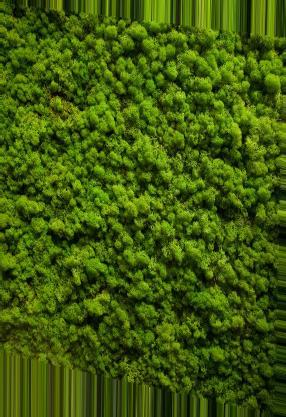

“An extension strategy is a practice used to increase the market share for a given product or service and thus keep it in the maturity phase of the marketing product lifecycle rather than going into decline.
To extend our market we have a few strategies that we implement:
• rebranding,
• price discounting
• seeking new markets.
When we have our production running after our acquisition of large industrial projects like Ikea and others. We start marketing our product to the housing market, by presenting our product can easily be bought online or in partner stores like Ikea with the Click and Go manual we showed earlier in the product service. We will also form key partnerships with housing corporations, contractors and architects.
When we have a larger production we can lower the initial panel price. From €50 to €35 a panel. Once we have established a larger SOM we will start to expand to other countries in europe, but also globally, to metropolitan cities that are dealing with the same UHI-challenges, suchs as Australia and China
•
•
•
•
•
•
•
•
•
•
•
•
•
•



•
•
•
•
•
•
•
•

•
•
•
•
•
•
•
•
•
•
•
• start
• hire interns
• expand the team
• improve marketing
• finalizing the frame design
• start setting up a bigger production line

•
•
•
•
•
•
•
•
•
CBS. (2020, December 18). Hoeveel woningen telt Nederland? - Nederland in cijfers 2020. Hoeveel woningen telt Nederland? - Nederland in cijfers 2020 | CBS. https:// longreads.cbs.nl/nederland-in-cijfers-2020/hoeveel-woningen-telt-nederland/
Centraal Bureau voor de Statistiek. (2022, March 28). Voorraad woningen en niet-woningen; mutaties, gebruiksfunctie, regio. https://www.cbs.nl/nl-nl/cijfers/detail/81955NED?dl=64EDC
Chargebee. (n.d.). CAC-LTV Ratio: Definition, Calculation, & Optimization | Chargebee Glossaries. https://www. chargebee.com/resources/glossaries/ltv-cac-ratio/
Climate Change 2022: Mitigation of Climate Change. (n.d.). IPCC. Retrieved 2022, from https://www.ipcc.ch/report/ ar6/wg3/
Climate change consequences. (n.d.). Climate Action. https:// ec.europa.eu/clima/climate-change/climate-change-consequences_en
de Weert, R. (2021, August 30). Op 1,5 miljoen daken liggen zonnepanelen: groei zet door, maar brengt uitdagingen mee. Change Inc. https://www.change.inc/energie/1-5-miljoenste-zonnepaneel-gelegd-37036
Dit zijn de gevolgen van klimaatverandering voor Nederland. (n.d.). Milieudefensie. https://miliaeudefensie.nl/actueel/ dit-zijn-de-gevolgen-van-klimaatverandering-voor-nederland
Droogte en hitte in de stad. (2022, March 2). STOWA. https:// www.stowa.nl/deltafacts/zoetwatervoorziening/aanpassen-aan-klimaatverandering/droogte-en-hitte-de-stad gorespyre.com. (n.d.). Respyre. https://gorespyre.com/
Green Roof Market – Global Industry Trends and Forecast to 2028 | Data Bridge Market Research. (n.d.). Data Bridge Market Research, Https://Www.Databridgemarketresearch.Com, All Right Reserved 2022. https://www. databridgemarketresearch.com/reports/global-green-roofmarket
JE BEDRIJF VERDUURZAMEN? ZO KAN HET. (n.d.). Ekwadraat. https://ekwadraat.com/bedrijf-verduurzamen-kansen-en-verplichtingen/
McCarthy, J. (2021, July 30). Climate Crisis: What’s the Difference Between a Rise of 1.5, 2, and 3 Degrees Celsius? Global Citizen. https://www.globalcitizen.org/en/content/ the-difference-in-global-warming-levels-explained/#:%7E:text=Two%20degrees%20of%20%20warming%20 would%20%20bring%20around%2029%20%20additional%20%20days,reaches%202%20degrees%20of%20
Ministerie van Economische Zaken en Klimaat. (2022, January 5). Verduurzaming industrie. Bouwstenen bedrijvenbeleid | Bedrijvenbeleid in beeld. https://www.bedrijvenbeleidinbeeld.nl/bouwstenen-bedrijvenbeleid/verduurzaming-industrie#:%7E:text=In%20het%20klimaatakkoord%20 van%2028,onder%20meer%20het%20Energieakkoord%202013.
Palermo, S. A., & Turco, M. (2020). Green Wall systems: where do we stand? IOP Conference Series: Earth and Environmental Science, 410(1), 012013. https://doi. org/10.1088/1755-1315/410/1/012013
Patz, J. A., Frumkin, H., Holloway, T., Vimont, D. J., & Haines, A. (2014). Climate Change. JAMA, 312(15), 1565. https:// doi.org/10.1001/jama.2014.13186
Physical, Psychological, and Social Health Impact of Temperature Rise Due to Urban Heat Island Phenomenon and Its Associated Factors. (n.d.). Rhhz. http://html.rhhz.net/ SWYXYHJKX/html/t20180820_189842.htm
QIU, G. Y., LI, H. Y., ZHANG, Q. T., CHEN, W., LIANG, X. J., & LI, X. Z. (2013). Effects of Evapotranspiration on Mitigation of Urban Temperature by Vegetation and Urban Agriculture. Journal of Integrative Agriculture, 12(8), 1307–1315. https://doi.org/10.1016/s2095-3119(13)60543-2
Readar: 7 procent van groene daken heeft ook zonnepanelen - Solar Magazine. (n.d.). Solarmagazine. https://solarmagazine.nl/nieuws-zonne-energie/i22290/readar-7-procentvan-groene-daken-heeft-ook-zonnepanelen
Rushayati, S. B., Shamila, A. D., & Prasetyo, L. B. (2018). The Role of Vegetation in Controlling Air Temperature Resulting from Urban Heat Island. Forum Geografi, 32(1), 1–11. https://doi.org/10.23917/forgeo.v32i1.5289
Stache, E. E., Schilperoort, B. B., Ottelé, M. M., & Jonkers, H. H. (2022). Comparative analysis in thermal behaviour of common urban building materials and vegetation and consequences for urban heat island effect. Building and Environment, 213, 108489. https://doi.org/10.1016/j. buildenv.2021.108489
Statista. (2021, November 9). IKEA: number of store visits globally 2010–2021. https://www.statista.com/statistics/241828/number-of-visits-to-ikea-stores-worldwide/#:%7E:text=IKEA%3A%20number%20of%20 store%20visits%20globally%202010%2D2021&text=In%20the%20fiscal%20year%20of,one%20billion%20 visits%20of%202019.
VanHoosen, A. (2014, June 9). Does combining moss and Sedum improve functional performance of green roofs in the Pacific Northwest? ScholarsArchive@OSU. https:// ir.library.oregonstate.edu/concern/undergraduate_thesis_or_projects/sj139376x
all figures are my own work instead when the refrence is mentioned
figure 1: executive summary
figure 2: exploded view mossie panel
figure 3: apartment building with mossie panels
figure 4: homes, garages and gardens with mossie panels
figure 5: gallery flats with mossie panels on the balustrades.
figure 6: capacities moss (gorespyre.com, n.d.)
figure 7: product service route
figure 8: value proposition canvas
figure 9: businessmodel canvas
figure 10: comparison of mossie to the competition
figure 11: diagram comparison of mossie to the competition
figure 12: stakeholder map
figure 13: decision making unit
figure 14: amount of buildings in the netherlands (cbs.nl)
figure 15: excel calculations
figure 16: excel calculations
figure 17: excel calculations
figure 18: ikea warehouse facade with mossie panels
figure 19: excel calculations financial plan
figure 20: excel production process
figure 21: diagram of production warehouse
figure 22: exploded view design mossie panel
figure 23: marketing strategy
figure 24: market expansion map
figure 25:” click and go” diagram
figure 26: roadmap
The Hague, Department housing
Have a program dealing with green roofs, white roofs, blue roofs, solar panels and a water absorption program is coming. we give subsidy for green roofs
cve and vve make it difficult to implement green roofs, sustainability is not legally regulated. High degree of people who want it within VVE however, sustainability is not at the top of the list (financially not a priority..
Green roofs are often only profitable for upper residents, green roofs are not much better in terms of insulation than other insulation on the roof.
we Only search to implement green roofs on flat roofs, several people in a building, decision-making is difficult. We have projects active in neighborhoods in which villagers stimulate each other to get green solution. There are roof coaches, so people can get easily accessible advice. This mainly concerns large VVE, because these mainly have flat roofs.
Haarlem councilor; Cie. Management, Cie. DevelopmentSpokesperson on the files: In Development Committee: Economy - (together with Peter); Tourism; Spatial urban development - together with Jasper. In the Management Committee: A.o. Energy transition, Development visions & Animal welfare.
insulation campaigns, solar panels campaigns strategic plan for climate adaptation in the timeline for 2050, we need 225 million.
We have subsidies for green roofs. we want to ecourage citizens to come together and maintain a piece of greenery together with your street and inspire each other to build a green roof/facade.
General climate awareness campaign. We are Ultimately responsible for the public space. We hope that people will decide to implement green/sustainable solutions to their homes.
We also want people to make air quality measurements themselves because it costs the municipality €100,000 per measurement. So we want citizens to make measurements to get a wide understanding of the air quality in the city. We want to have a particulate matter meter in several places in the city.
First look at petrified neighborhoods and make them greener. Lowering the parking standard against particulate matter and surfacing.
Timeline of strategy lasts until 2050 particulate matter symptoms are the result of other problems due to UHI-effects.
Energy transition until 2040. People also have to start doing things themselves, because it is difficult from politics to do something in a private house.
We have a small balcony on the south facade with a few plants that barely survive, a small bench and a closet.
We had some plants in the summer but they did not survive the weather. We would like more green like a tree, but it takes a lot of maintenance and takes up space. During summer our balcony is crazy hot. We have a closed balcony with plates. We would like to give it an extra touch.
Maintenance is a problem. We asked the gardener what plants are easiest to maintain.
We would want to spend like 50-60 euros not a lot more because if it does not survive we would have to buy a new one. Maintenance is the main problem and there is not enough room for a lot of plants. We have a wash and dryer closet on the other side of the closet so we would need to move the pots every time we need to use the washer or the dryer.. Right now we do not have anything to cool our balcony during the summer so we are looking for a solution for this.
Business owner who rents his warehouses and an office
We have a garden in front of the office (a warehouse)
The industrial area is layed with only tiles so we tried to make something nice with the garden.
Onze erfafscheiding we tried to make hedges. A lot of maintenance is the problem, like watering the plants.
we never thought of a green roof or facade?
We are renting the place and the investments are to improve the building. so we are making it better for the owner. If i would make my own building i would integrate green solutions in the facade/roof.
The load the roof can take is a problem for pv-panels and green solutions. It has light so it makes the roof a lot less strong and this is why we did not decide on pv-panels.
We have problems with the heat in the summer. We are heating in the winter and cooling a lot in the summer. We now cool the building by opening doors and roof windows. And by asking our employees to use the shades and open windows instead of using the air conditioning.
If we stayw longer at this location and have a new housing contract, We would be willing to invest 100.000 euros to improve the location.
An interesting question is to what extend vegetation is effective in lowering UHI in comparison to a water body. The latent heat (QE) production by water amounted to 40% of the absorbed radiative energy (Qa), while convective heat production was 52% of total incoming radiative energy. QE production from absorbed energy was therefore found to be higher than that of ivy and sedum (34 and 27% respectively), but lower than that of moss and grass (50 and 42% respectively). Convective heat production by water from total incoming energy was found to be 52% and this value was lower than that of sedum (67%), ivy (59%) and grass (54%), but higher than that of moss (47%). Apparently moss does thus perform better than a water body in terms of the mitigation potential of UHI. This could be due to the greater transpiration surface of the moss compared to the evaporation surface of water (Stache et al., 2022).
A water body with an area of 16 m2 can cool 2 826 m3 of surrounding space by 1°C. The development of urban agriculture including community gardens, roof gardens (green roofs), backyard gardens, and aquaculture, can intensify the mitigation of urban heat island effect. These results strongly suggest that increasing evapotranspiration in cities can mitigate the effect of urban heat islands, which can provide some reference for urban planning and design such as the distribution of urban greening including urban agriculture and water boby, on aspects of cooling urban temperature and improving urban heat environment (QIU et al., 2013).
This study found that moss has the ability to absorb 16 times more water than Sedum and would provide increased stormwater retention if added to green roof vegetation. Moss could also prolong storm water retention under warm conditions and accelerate water dissipation under cool conditions. Temperature flux reduction could be improved with the addition of moss (VanHoosen, 2014).
The moss is very low maintenance, so there is almost no water needed to keep the moss in good condition.
Moss holds water as well as soil and other plants, due to the lightweight characteristics the weight when wet will allow for the panel to be placed in a lot of places. But it also holds some water which can take some pressure of the water systems during heavy rainfall
Ecosystem benefits Figures
NH3 uptake 211-422 grams nitrogen/m./year
NO3uptake 21-42 grams nitrogen/m./ year
Phytoremediation (capture and processing of particulate matter)
PM10 1.2-8.2 gram/m. of which 0.5-1.8 gram/m. PM2.5
Dry weight moss 1.2 kg/m2
Water collection capacity 5 L/m.
CO2 absorption 0.6 kg/m./year
Moss production 120g/m./year
Air filter capacity (indication)
1 million m. of air per m. per year
Improvement of mental health ( 30% with daily exposure to nature
Insulation Still to be quantified
Compared to other plants, moss takes up the most particles and cleans the air as best.
Moss can take in a lot of water due to its leaf index. it can evaporate as much water as a square meter of water. This means that during summer the air surrounding the panel is cooled.
Moss can take in a lot of water due to its leaf index. it can evaporate as much water as a square meter of water. This means that during summer the air surrounding the panel is cooled.
Moss can absorb sound so it can provide damping in noisy areas.
(Gorespyre.Com, n.d.)
https://www.statista.com/statistics/241828/number-of-visits-to-ikea-stores-worldwide/#:~:text=IKEA%3A%20number%20of%20store%20visits%20globally%202010%2D2021&text=In%20the%20fiscal%20year%20of,one%20billion%20visits%20of%202019.
Niet-woning met functie:
Niet-woning
Niet-woning
Niet-woning
functie:
https://solarmagazine.nl/nieuws-zonne-energie/i22290/readar-7-procent-van-groene-daken-heeft-ook-zonnepanelen
https://www.change.inc/energie/1-5-miljoenste-zonnepaneel-gelegd-37036
panels on roofs 10990214,15 panels
total m2 green roofs 2616199,95 m2 Mossy panels on facades 3349398,60 panels
m2 roofs with PV-panels 62788798,8 m2
127.898 total m2 of roofs aleady in use 65404998,75 m2 3 month starting process
3 months every month revenye Niet-woning
https://www.cbs.nl/nl-nl/cijfers/detail/81955NED?dl=64EDC
https://www.cbs.nl/nl-nl/cijfers/detail/70262ned?dl=3D8B#TotaalBebouwdTerrein_6
https://www.cbs.nl/nl-nl/achtergrond/2018/22/woonoppervlakte-in-nederland
Assumption
market share green roofs
Assumption Mossy market share facades 0,05
Total
produced in a month 3904 panels
amount that can be produced 93696 panels
Mossy
Mossy
1
Mossy
https://www.statista.com/statistics/241828/number-of-visits-to-ikea-stores-worldwide/#:~:text=IKEA%3A%20number%20of%20store%20visits%20globally%202010%2D2021&text=In%20the%20fiscal%20year%20of,one%20billion%20visits%20of%202019.
https://solarmagazine.nl/nieuws-zonne-energie/i22290/readar-7-procent-van-groene-daken-heeft-ook-zonnepanelen
https://www.change.inc/energie/1-5-miljoenste-zonnepaneel-gelegd-37036
panels on roofs 10990214,15 panels Niet-woning
Niet-woning
https://www.cbs.nl/nl-nl/cijfers/detail/81955NED?dl=64EDC
https://www.cbs.nl/nl-nl/cijfers/detail/70262ned?dl=3D8B#TotaalBebouwdTerrein_6
https://www.cbs.nl/nl-nl/achtergrond/2018/22/woonoppervlakte-in-nederland
panel capacity 4,88 x total m2 warehouse
Panels sold
revenue made €38.750.000
https://www.statista.com/statistics/241828/number-of-visits-to-ikea-stores-worldwide/#:~:text=IKEA%3A%20number%20of%20store%20visits%20globally%202010%2D2021&text=In%20the%20fiscal%20year%20of,one%20billion%20visits%20of%202019.

